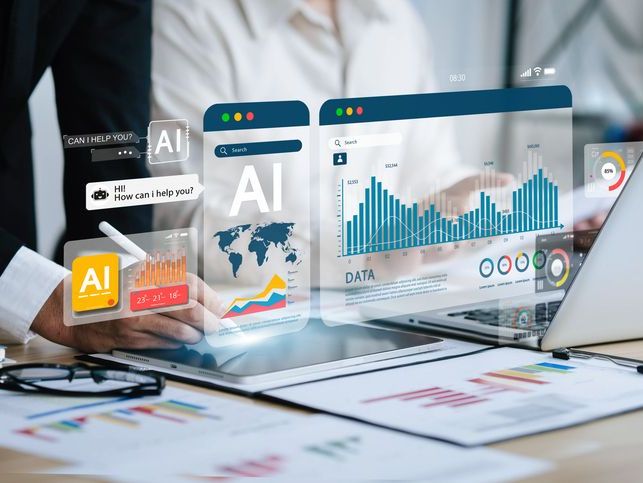People analytics is an important way for organizations to gain a competitive edge in today’s unpredictable market. Leading companies leverage more data and insights about their workforce to make informed decisions than ever before. At the same time, people analytics metrics are more nuanced and sophisticated — especially as new analytical tools and methods become available.
In this post, we’ll share the people analytics metrics all executives, HR professionals and managers should focus on to unlock the full potential of your organization.
What is people analytics?
People analytics is the practice of collecting, analyzing and interpreting employee or HR data to gain valuable insights into peoples’ performance, engagement and overall experience within an organization. The insights gained from people analytics assists with data-driven decision making to support business objectives. You may also see people analytics referred to as “HR analytics,” “talent analytics” or “workforce analytics.”
Why people analytics metrics matter
People analytics plays an important role in outperforming competitors, according to research by Deloitte. Collecting and analyzing data about employees, productivity trends and other workforce metrics allows executives to make data-driven decisions rather than relying on feelings or traditions.
When implemented correctly, tracking people analytics metrics can lead to:
- More effective HR programs and policies
- Better employee engagement and retention
- Enhanced training and development programs
- Intentional diversity, equity and inclusion programs
- Clearer understandings of the costs of HR processes
- More informed choices on changing processes or procedures to improve ROI
- Greater performance and productivity
- A future-proofed workforce
30 essential people analytics metrics
With so many people analytics metrics specific to industries, organizations and different goals, how do you know which ones are worth tracking? Start with the fundamentals all organizations should measure.
Talent acquisition and recruitment
To make sure you have the right staff members in place at the right times, you need to optimize your talent acquisition and recruitment processes.
These metrics will show you where bottlenecks happen in your recruiting and hiring processes and give you a better idea of how to budget for hiring processes:
- Time to fill: How long it takes to fill a position, from identifying the role to writing the job description, posting your listing and hiring your candidate.
- Time to hire: How long it takes individual candidates to move from submitting an application to accepting your job offer.
- Cost per hire: How much you spend on hiring candidates, calculated by adding all hiring costs and dividing by the number of people you hired during a set timeframe.
- Acceptance rate: How often candidates accept an offer vs. how many offers you send.
Retention and turnover
High turnover rates are often red flags that something isn’t right in your organization, whether it’s uncompetitive pay, overworked employees, burnout, a lack of training, poor onboarding or toxic management practices. Losing employees causes real damage to your bottom line: Gallup reports replacing an employee costs anywhere from 40% to 200% of the person’s annual salary depending on experience and role. It’s equally important to measure employee retention to get a different perspective on what’s working within your organization.
Keep an eye on these metrics as heralds of other issues in your organization:
- General turnover rate: How often employees leave the company and at which point in their employment.
- Retention rate: How many employees stay with the company and for how long.
- First-year/new hire turnover rate: How many employees leave before or near their first anniversary with the company.
- Talent turnover rate: How many high-performing or high-potential employees leave.
- Voluntary turnover rate: How many people who leave voluntarily as opposed to those who are terminated.
- Retention rate per team/manager: How many employees leave per manager or team.
Productivity and performance
Measuring employee performance and productivity gives your human resources team the data they need to design effective training programs, reward hard-working employees and spot distractions.
These metrics inform management practices to help employees do their best work:
- Employee performance: A measurement of how well employees perform, reported through self-assessments, peer reviews, manager reports, work quality and role-specific metrics.
- Employee productivity: How effectively and efficiently employees perform their assigned tasks and meet deadlines or goals.
- Revenue per employee: How much revenue your company brings in divided by how many employees you have.
- Focus time: A measurement of how much employee time is spent focused on work without interruption, tracked through productivity monitoring software.
Training and development
Providing employees with opportunities to upskill or develop new areas of expertise gives your company a competitive advantage by improving your talent pool. At the same time, employees who have clear pathways for advancement or upskilling within a company are more engaged, productive and loyal.
Track these metrics to inform your training and development program and measure how well it’s doing:
- Internal promotion rate: How many employees are promoted from within the organization.
- Training efficacy rates: Using before and after data to measure how training affects skills or performance among employees.
- Habit analysis: Determining what habits contribute to faster employee development based on trends across roles.
- Skills gaps: A measurement of which skills or abilities are required for success compared to which skills or abilities current employees have.
Diversity and inclusion
Research shows diversity in hiring leads to more creative solutions while boosting morale and retention rates. It’s also important to job candidates. In a recent Monster survey, Gen Z employees say they look for diversity and inclusion programs when considering a new place to work. HR teams use diversity and inclusion data to guide where to look for new recruits and to identify what barriers members of different demographic groups may face within the organization.
Instituting an effective diversity and inclusion program means using data in hiring and development to reduce the effects of implicit bias. Key metrics include:
- Headcount: Measures the total number of employees in your organization or in a certain department.
- General demographics: An overview of your workforce including gender, education, age, race and how long employees have worked for you.
- Promotion counts: An overview of which demographic groups are most often promoted in your organization.
- Applicant demographics: Examines the demographics of applicants who make it through to each stage during the hiring process.
- Pay equity: A measure of whether employees who do the same job are compensated equally regardless of demographics.
Employee engagement
Employee engagement indicates the investment employees have in their work and the company. It’s one of the most important metrics for businesses to track, and is crucial for ensuring employees are satisfied and giving their best effort. While employee surveys may provide some insight, an employee engagement analytics solution like ActivTrak provides more advanced metrics in real time so you can keep an eye on engagement.
Here are some of the most important engagement metrics to track:
- Employee satisfaction: How many employees say your company is a good place to work vs. those who don’t. Organizations often use the Employee Net Promoter Score (eNPS) or internal surveys to track this metric.
- Workload balance: Workload balance indicates if employee workloads are reasonable and distributed equally. If workloads are unbalanced, employees may be overwhelmed and on their way to burnout and disengagement.
- Absenteeism rates: How often employees call out, not including approved vacation. Frequent or excessive unexpected absences indicates employees are disengaged.
- Customer satisfaction: Indicates if customers are satisfied with the service or work provided by the employee. Disengaged employees may be less enthusiastic or concerned about the customer, so customer satisfaction (CSAT) is also an indication of engagement.
Track people analytics metrics with ActivTrak
Embracing people analytics is no longer an option — it’s imperative for organizations to thrive. By focusing on the most important metrics, business executives make informed decisions to drive performance, engagement and overall business success.
Ready to harness the power of people analytics at your organization? ActivTrak’s comprehensive workforce analytics platform provides deep insights into employee productivity and well-being — the kind that helps more than 9,500 organizations make more informed decisions that drive performance and engagement. Contact our sales team today to learn more or get a demo to see how you can start using people analytics today.





